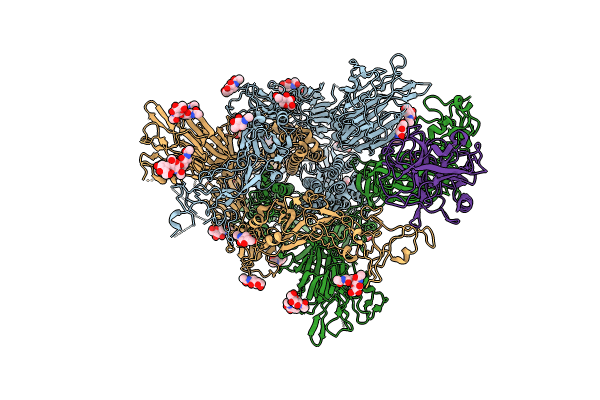
Deposition Date
2024-02-06
Release Date
2024-07-17
Last Version Date
2024-10-16
Entry Detail
PDB ID:
8Y87
Keywords:
Title:
Structure of HCoV-HKU1C spike in the functionally anchored-1up conformation with 1TMPRSS2
Biological Source:
Source Organism:
Human coronavirus HKU1 (isolate N5) (Taxon ID: 443241)
Homo sapiens (Taxon ID: 9606)
Homo sapiens (Taxon ID: 9606)
Host Organism:
Method Details:
Experimental Method:
Resolution:
3.26 Å
Aggregation State:
PARTICLE
Reconstruction Method:
SINGLE PARTICLE


